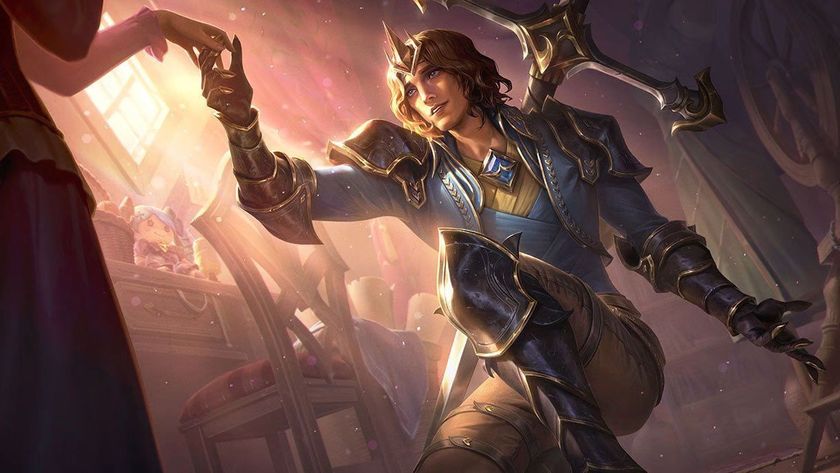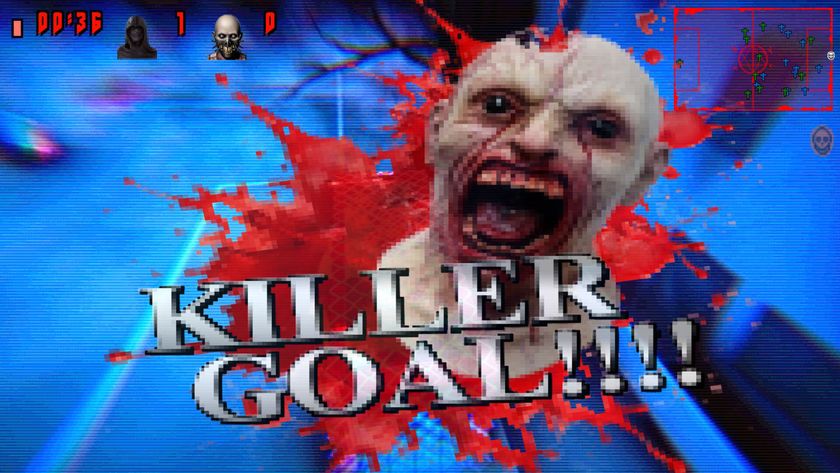Everything we know about Paragon
MOBAs are to the modern gaming scene as fighting games were to '90s arcades: seems like everybody wants a piece of the highly replayable, immensely profitable action. The latest challenger to enter the multiplayer ring is Paragon, coming to PS4 and PC (with crossplay and cross-saves) in 2016. If nothing else, developer Epic Games (most famous for the Gears of War franchise) has the gumption to definitively label Paragon as a MOBA, rather than dance around the clear League of Legends / Dota 2 influence with some other acronym. And fortunately for those who might be suffering from MOBA fatigue, Paragon is tweaking the familiar 5v5 formula with an intriguing deck-building system. Here's everything you need to know about Epic's upcoming MOBA before it enters beta (and hopefully launches) later this year.
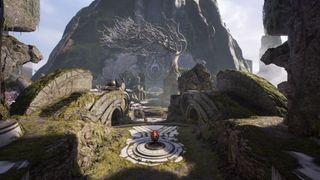
The arena
You've no doubt seen Paragon's structure before: 5v5 battles, fought along the three lanes running from your base to the enemy territory, with a spacious jungle full of neutral enemies occupying the space between lanes. Once a match starts, waves of AI drones march toward the opposing base, struggling to destroy the defensive towers they'll inevitably encounter (in this case, laser-firing crystals) if you and your teammates aren't there to assist them. Just outside your precious core, there's a ring of penultimate defensive structures that will buff up your team's minions when destroyed. The primary mode of play is PvP, but there's also Solo or Co-op vs AI to help you get your bearings.
That's all pretty standard stuff, but the aesthetic of Paragon's arena is definitely prettier than what you're used to. Set in the fantastical realm of Agora, Paragon's battles take place amidst overgrown ruins rendered in the Unreal Engine 4, giving the whole map the photorealistic look of rural locales from The Lord of the Rings films. The jungle is obscured by a canopy of strange pink foliage, truly making you feel hidden from the rest of the world when you're booking it between lanes.
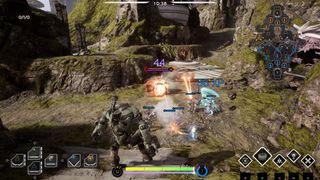
The third-person perspective
Like Smite and Gigantic, Paragon employs a behind-the-back camera instead of the typical top-down, isometric view, putting you right in the middle of the action (and leaving your back wide open to ganks if you're not accustomed to constantly checking your corners). The third-person perspective also plays a big part in the verticality of the map design: stairways and rocky ridges litter the map with the jungle stretches far beneath the ruins, giving you the opportunity to physically jump behind cover or prey on unsuspecting enemies from above.
The down-on-the-ground perspective also necessitates that most crucial of third-person skills: aiming. Instead of clicking your desired targets to auto-attack, you need to properly aim at enemies when using your abilities, with some helpful smart-targeting to assist you with lining up basic attacks. Oh, and take my word for it: few things are as embarrassing as missing a point-blank boulder throw that stuns whoever it hits, turning a would-be gank into a pitiable retreat. Don't let the intensity of a skirmish throw off your aim, lest you repeat my failures.
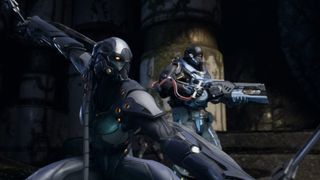
The heroes
Heroes in Paragon fall into five classic archetypes: Rangers (long-range ADCs), Casters (spell-slinging glass cannons or supports), Assassins (roaming gank enablers), Fighters (melee bruisers), and Tanks (walking damage sponges). Similarly, their abilities are familiar fare; things like ticking time bombs, colossal long-distance laser beams, and stun-inducing AOE ground pounds are all ingrained into any MOBA player's repertoire. Every hero has four active abilities (including their ultimate) and one passive, plus a basic attack that you can choose to upgrade in lieu of one of your actives.
Controlling your hero with the DualShock 4 is a cinch, as the third-person action lends itself nicely to a console controller. You jump with X, your basic attacks are bound to R2, normal abilities on R1, Square, and Circle, and your all-important Ultimate is activated with a tap of the Triangle button. Meanwhile, each hero can carry up to six items total: two passive items, and up to four active items bound to the directions on the D-Pad. The only controls you'll have to get used to are pushing down R3 to recall back to base, and the ability to run to fights faster by holding L2 and pressing X. Be warned: while this sped-up run speed is amazing for ganks or escapes, getting hit before you can deactivate it roots you in place, turning you into a sitting duck.
Sign up to the 12DOVE Newsletter
Weekly digests, tales from the communities you love, and more

The deck-building
Here's Paragon's biggest pull, besides the Unreal Engine 4 visuals. Outside of the matches themselves, Paragon uses a deck-building system to let you plan ahead for character builds and amass a collection of rare items. Instead of the typical store seen in most MOBAs, where gold is the base currency and every item is on offer to every hero (even if they have no use for some of them), the items available for available to your Paragon hero are determined by the deck you selected before the match. The best items can be upgraded up to three times, and the potency and effect of those upgrades (additional health or mana, reduced cast time, etc.) will also be tied to your deck.
Don't fret: these cards can only be earned through gameplay, so you won't have to worry about competing with rich kids who bought all the powerful items. But the various types of card packs are random, and some items are rarer than others, adding a collectibility that you might find enticing or frustrating. Building the optimal deck for your hero of choice is effectively a tricky math problem: you only have 60 card points total to spend in a match, and if you end up ditching an item you purchased early on (like a healing potion), you can't get it back for the remainder of that match. To make things even more strategically complex, each hero has certain Affinities for specific card types that'll improve their efficiency even further. It's the kind of complex meta-game that min-maxers can spend hours dabbling with in pursuit of the best possible build for their playstyle.

The jungle boss
Another nice variation in Paragon is the way the almighty jungle boss works. Dota 2 has Roshan, which awards the reincarnation properties of the Aegis of the Immortal item, while League of Legends has Baron Nashor, whose death grants a massive team-wide buff across heroes and minions alike. Paragon has the Prime Guardian, whose effect is similar to the Baron buff - but there's a catch.
Killing the Prime Guardian is only the first step to swinging the game in your team's favor. Once this crystalline giant is killed, he drops an orb that must then be delivered to an altar near enemy territory, Capture the Flag-style. Only when it's delivered will your team reap the all-powerful rewards of its buff, but the entire opposing team can see where the orb carrier is, and they'll know where you're headed. It creates a cool emergency objective for both teams, rather than leaving one team feeling like they have no chance to retaliate after the big jungle monster falls.
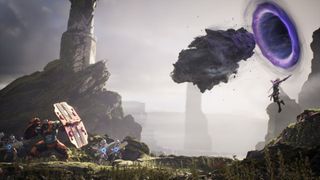
The replay system
Considering how League of Legends players still rely on third-party programs to enjoy replays, it's commendable that Paragon will be launching with a fully featured replay mode. We're talking multiple camera modes, info-rich overlays if you want 'em, and tools to export your greatest moments straight to YouTube. Anytime you see gameplay in the trailers for Paragon, that was all captured using the replay system.
You'll be able to view saved replays from a central server, letting you relive the highlights of you, your friends, or anyone playing your chosen hero. There's even a graph that tracks how much damage was being dealt at any given time, giving you a simple way to skip ahead to the really good parts when chaotic teamfights were breaking out left and right. Future plans include the ability for players to spectate live matches, albeit with a delay (to foil those accursed livestream snipers).
Lucas Sullivan is the former US Managing Editor of 12DOVE. Lucas spent seven years working for GR, starting as an Associate Editor in 2012 before climbing the ranks. He left us in 2019 to pursue a career path on the other side of the fence, joining 2K Games as a Global Content Manager. Lucas doesn't get to write about games like Borderlands and Mafia anymore, but he does get to help make and market them.
Most Popular





